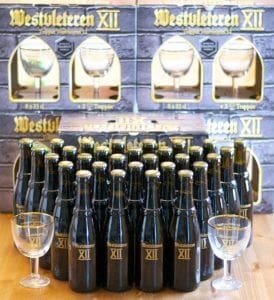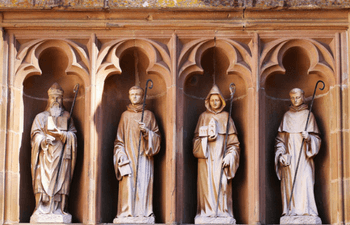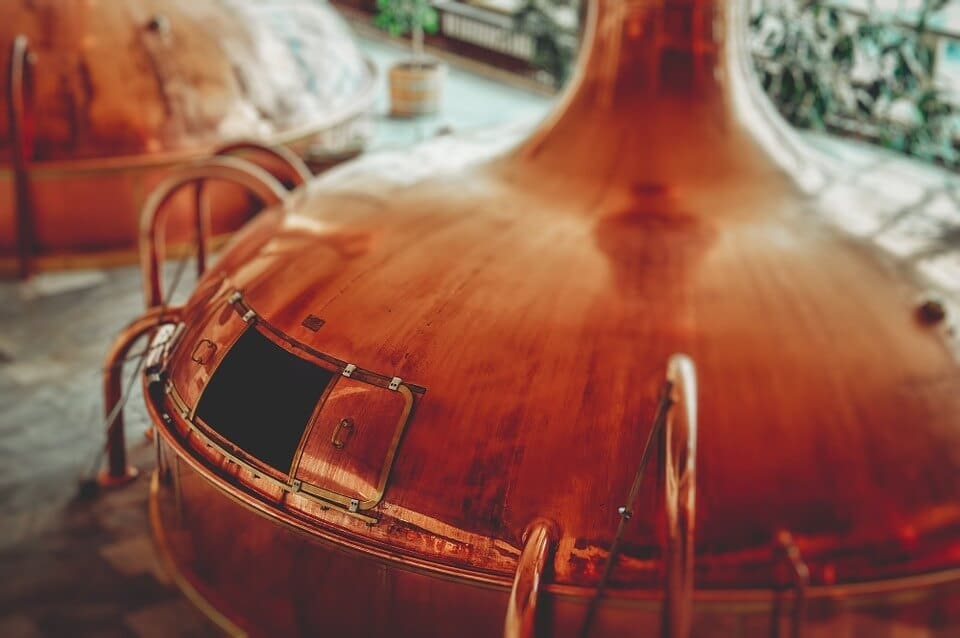
TRAPPIST VERSUS ABBEY
For hundreds of years, monks brewed Trappist ales behind cloistered walls for their own personal enjoyment and for enjoyment by their local communities. However, in the decades leading up to and following World War II, Trappist beer began to earn a worldwide reputation for exceptional quality and taste. After the war, “Trappist” beers started popping up everywhere, and many had no association with monasteries whatsoever. To prevent opportunistic brewers from cashing in on – and potentially ruining – their reputation, the Abbaye Notre Dame d’Orval took the Veltem brewery of Leuven to court to stop the production of “Veltem Trappist” in 1960. The Belgian Trade and Commerce court determined that to be called “Trappist,” a beer must be created and sold by monks who belonged to the Trappist order. Beers created in the Trappist style but not made by monks would be called “abbey beer.”
THE RISE OF THE ABBEY BEER
To further protect the Trappist name, the International Trappist Association was formed in 1997, allowing only ITA-member monasteries that followed strict brewing rules to bear the Authentic Trappist Product logo on their ales. Those rules include brewing the beer inside the abbey walls by or under the supervision of monks – and that all proceeds from beer brewing be used to support the monastery and community.  Anything that doesn’t meet the strict criteria for Trappist beer is considered to be an “abbey beer,” and according to the Belgian Beer Journal, there are very few rules for what it takes to qualify as an abbey beer. The beer doesn’t have to be brewed inside ancient walls and monks do not need to supervise the process or brew the beers themselves, but initially, the breweries did have some historical connection to a monastery. However, the standards soon expanded – and an “abbey beer” could be any of the following:
Anything that doesn’t meet the strict criteria for Trappist beer is considered to be an “abbey beer,” and according to the Belgian Beer Journal, there are very few rules for what it takes to qualify as an abbey beer. The beer doesn’t have to be brewed inside ancient walls and monks do not need to supervise the process or brew the beers themselves, but initially, the breweries did have some historical connection to a monastery. However, the standards soon expanded – and an “abbey beer” could be any of the following:
- produced by any monastery – including those that are non-Trappist
- made by a commercial brewery who has a license or commercial arrangement with an active monastery
- a beer with no religious connection that’s simply been given the name of a former or even fake abbey by a commercial brewer
- a beer that features a monk, abbey, or other vague religious symbol on the label without specifically referring to a monastery
Because what qualifies as an abbey beer started to vary so wildly, the Union of Belgian Brewers introduced a new logo for “Certified Belgian Abbey Beer” in 1999. This logo was used to designate beers that were created under license to a current or abandoned abbey. To use the logo, a brewery had to allow the monastery to have some control over the commercial brewing operation and give a portion of the profits from the beer to the abbey or its associated charities. This helped to weed out breweries that simply implied religious connections by using the name of an abbey or saint and calling their product an abbey beer. Today, there are roughly 20 Certified Belgian Abbey Beers available – along with a significant number of “abbey beers” that haven’t obtained any type of certification.
THE TYPES OF TRAPPIST STYLE ALES
Since abbey beers can be made on a commercial scale, it’s become much easier to get your hands on a brew that has the same characteristics of the Trappist style ale – even if it wasn’t made by monks. Both official Trappist beers and certified abbey beers are considered to be “Belgian style” beers according to Aleteia, which means they’re highly-fermented and non-filtered. Craft Beer and Brewing magazine goes into even more depth, explaining Trappist beers and abbey beers:
- are top-fermented ales
- use warm fermentations, at temperatures as high as 86°F
- are made with Belgian yeast strains that result in fruity and spicy flavors
- have high alcohol by volume ABV levels, often between 6% and 9.5%
- may include dark candi sugar (instead of roasted malts) for a dark, rich color
 These beers are made in different styles, but there are three main types that are most commonly associated with Trappist ales or Abbey beers: the Dubbel, the Triple, and the Quadruple. According to Nick Anderson, beermonger at Arrowine, the Enkel – or “single” – was also an original Abbey style that’s comparable to today’s Session Ale and was made for everyday drinking. However, Enkels have become fairly uncommon as the other three types of Trappist ale have gained popularity. Anderson explains that while many people believe Dubbel, Tripel, and Quadrupiel refer to either the number of fermentations or the amount of malts, that’s not necessarily true. The names were given as warnings to the general public that the beers were stronger than normal – with the increase in number corresponding to an increase in strength. This remains true today, as Dubbles are often in the 6% ABV range, Tripels average around 8% ABV, and Quadrupiels are somewhere between 10% and 12% ABV – though some have been known to reach as high as 14% or 16% ABV. Of course, every abbey beer or Trappist ale has a distinctive taste that reflects the recipe, the ingredients, and the brewing process, but there are common characteristics that define each type of brew.
These beers are made in different styles, but there are three main types that are most commonly associated with Trappist ales or Abbey beers: the Dubbel, the Triple, and the Quadruple. According to Nick Anderson, beermonger at Arrowine, the Enkel – or “single” – was also an original Abbey style that’s comparable to today’s Session Ale and was made for everyday drinking. However, Enkels have become fairly uncommon as the other three types of Trappist ale have gained popularity. Anderson explains that while many people believe Dubbel, Tripel, and Quadrupiel refer to either the number of fermentations or the amount of malts, that’s not necessarily true. The names were given as warnings to the general public that the beers were stronger than normal – with the increase in number corresponding to an increase in strength. This remains true today, as Dubbles are often in the 6% ABV range, Tripels average around 8% ABV, and Quadrupiels are somewhere between 10% and 12% ABV – though some have been known to reach as high as 14% or 16% ABV. Of course, every abbey beer or Trappist ale has a distinctive taste that reflects the recipe, the ingredients, and the brewing process, but there are common characteristics that define each type of brew.
- Dubbels are usually Brown Ales with a russet color that comes from the caramelized sugar syrup used in many recipes. They often have a grainy flavor, a slight sweetness, and a caramel or fruity undertone with a gentle bitterness.
- Originally created by Trappist brewery Westmalle, Tripels are Golden Ales that tend to be strong and deep gold in color. With a clean wheat taste, assertive hoppiness and malty fruitiness, Tripels are subtle but show definite hints of stronger levels of alcohols.
- Dark brown or sometimes even black in color, Quadrupiels are the heaviest of the Trappist ales. With higher ABVs, Quads are known for a stronger, warm alcohol taste, along with an intense malt flavor, complex fruitiness, and balanced bitterness.
It’s incredible to consider that group of monks who simply wanted to follow the Rule of Benedict and support themselves through the manual labor of brewing played a part in a craft beer craze nearly a century later. Today, the Trappist tradition continues in those ancient monasteries where the monks still tend to generations-old recipes – and in the abbey beers that allow a wider audience to experience the pinnacle of brewing known as Trappist ale. Whether it’s filled with authentic Trappist ale or certified abbey beer, raise your goblet to the Trappists, and then sit back and savor every sip.

Reader Interactions